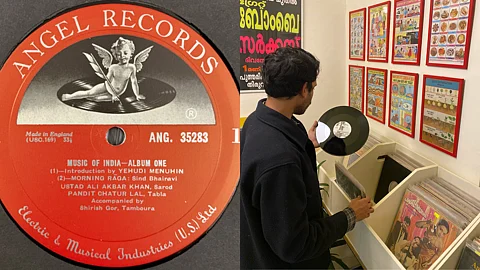
- HOMEGROWN WORLD
- #HGCREATORS
- #HGEXPLORE
- #HGVOICES
- #HGSHOP
- CAREERS
- ABOUT US
- CONTACT US

Once upon a time, in the golden age of Indian music, there was a magical object that spun stories through sound: vinyl records. From classical ragas to foot-tapping filmi numbers, records were the heart and soul of living rooms across the country. Companies like His Master’s Voice and the Gramophone Company of India transformed India’s musical landscape, turning the simple act of listening into a tactile experience. Fast forward to the 80s and 90s, and vinyl began to take its final bow as cassette tapes and, later, digital formats took the stage. But, vinyl has staged a comeback — one as exciting as Imran Khan's.
For years, vinyl in India had been relegated to dusty collections in our parents’ attics, or worse, sold off to secondhand shops for a fraction of their worth. The collective Indian imagination moved on from the crackling joy of LPs, embracing newer, faster mediums. And why wouldn’t we? Cassettes, CDs, and MP3s seemed like a logical progression: they were portable, convenient, and didn’t require finicky needle adjustments. But something was lost in the transition — the ceremony of placing that large black disc onto a turntable, lowering the needle, and holding your breath for that first note.
Cut to present-day, and we’re witnessing a vinyl renaissance. Alongside digging through our childhood closet for Y2K fashion, we’re digging through our parents’ to find vinyl too. Analogue is cool again, and there’s no better proof than this. Samanvii Digimedia Art and Solutions Pvt Ltd just opened India’s first vinyl record manufacturing plant in over four decades. They're spearheading the charge by using advanced European technology to bring vinyl back to the forefront of the Indian music scene. The plant has slashed production times from months to weeks, making it easier for both international labels and local independent artists to press their music.
For local artists and indie labels, the ability to press records domestically is a game-changer. Instead of waiting for months to import vinyl from overseas, they can now get their albums pressed right here at home, fostering a more diverse landscape. But the real magic of this vinyl resurgence isn’t just about the technology or the pressing plants, it’s about the people. In living rooms, college dorms, and quaint record shops, a new generation of enthusiasts is emerging. It’s not just about listening to music, it’s about the experience. The act of buying a record, reading the liner notes, admiring the album art, and gently lowering the needle onto the grooves is a spiritual ritual.
Vinyl, after all, offers something that Spotify playlists and YouTube autoplay can’t — intentionality. You can’t just shuffle an LP, you have to commit (I know, a scary word for some of you). You have to listen, not just skim through tracks. And maybe, in an age of instant gratification, that’s exactly what we’re craving. Beyond the nostalgia, there’s a haptic pleasure in vinyl that’s impossible to ignore. The weight of the record in your hands, the delicate way you have to handle it, the static charge as you slide it out of its sleeve — it’s a sensory delight. And for many, the analog sound of a vinyl record simply can’t be matched by the digital world. There’s a richness, a warmth, a depth that your AirPods just can’t deliver.
